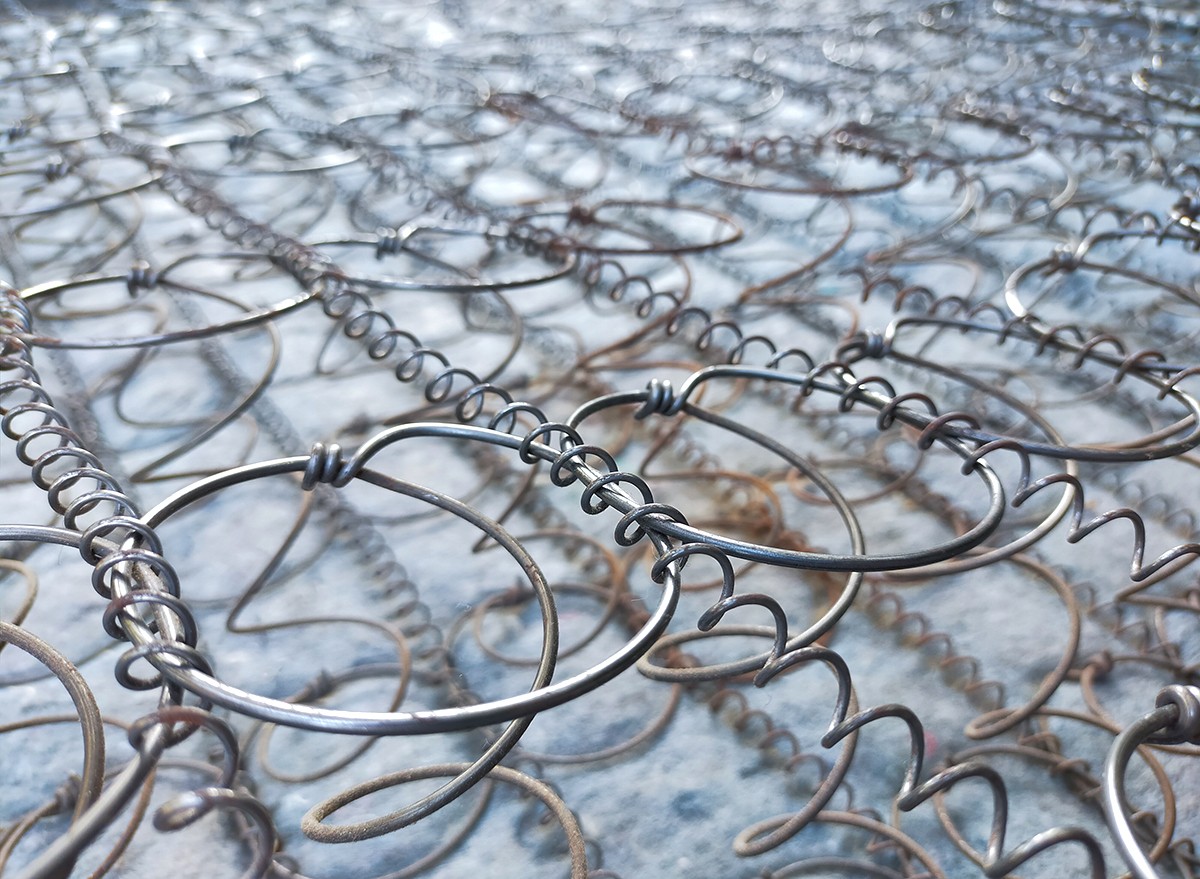5 Signs It’s Time to Get a New Mattress—And How It Could Save Your Sleep

Is an old, out-of-date mattress ruining your sleep? If you wake up every morning not feeling rested, it might be time to make a change. “An older mattress that’s well past its recommended lifespan can negatively impact sleep quality. Reduced support and an uneven surface can lead to discomfort and pain leading to a lot of shifting throughout the night,” Dustin Cotliar, MD, MPH, tells the Sleep Foundation. This is particularly worrisome as sleep is key to good health. “Sleep is essential to every process in the body, affecting our physical and mental functioning the next day, our ability to fight disease and develop immunity, and our metabolism and chronic disease risk,” says Erica Jansen, PhD, MPH via Michigan Health. A good mattress can make all the difference between a solid night’s sleep and a restless one—here are 5 signs your mattress needs to be replaced.
RELATED: Feng Shui Bedroom Tips for Better Sleep.
1
Your Mattress Is Old

When did you get your mattress? If it’s more than ten years ago, you may want to consider investing in a new one. “Though you may want to sleep in your current mattress forever, think of the wear and tear it goes through— your nightly tossing and turning, sweating, weight gain or loss, the addition of a child, pet, or partner,” says Casper.
2
Your Mattress Is Saggy and Lumpy

Natural wear and tear is inevitable, but if your mattress is saggy and lumpy, it’s time to upgrade. “When the padding within the mattress shifts around over time, you may see lumps in your mattress,” says Casper. “This uneven density can mean you’re not supported where you’re supposed to be. It can also cause uncomfortable pressure points. Though lumps are more common with lower-quality mattresses, it can also happen with higher-end mattresses that have run their course.”
3
Waking Up With Aches and Pains

The most important job a mattress does is to properly support your body while you’re sleeping. If you find yourself constantly waking up with aches and pains, it’s likely your mattress is not cutting it anymore. “Back pain is a common complaint among people with old or worn-out mattresses,” says American Mattress. “When a mattress no longer provides adequate support, it can cause misalignment of the spine, putting pressure on the muscles and joints. This can result in soreness and stiffness upon waking.”
RELATED: 7 Ways to Motivate Yourself to Wake Up Early.
4
You Can See and Feel the Springs

This is an issue with both innerspring and hybrid mattresses—if you can feel and see the coils poking through the mattress, it has to be replaced. “Innerspring mattresses, which have a coil support system, are a popular choice for many people,” says American Mattress. “However, they tend to have a shorter lifespan compared to other mattress types. On average, an innerspring mattress lasts around 6 to 8 years. The quality of the coils and the overall construction of the mattress can impact its longevity.”
5
Allergy Issues

An old mattress can exacerbate allergy symptoms. “Dust mites, a common allergen, can accumulate in mattresses over time,” according to Amerisleep. “These microscopic creatures thrive in warm and humid environments and feed on dead skin cells. Their droppings can trigger allergic reactions in some individuals, leading to symptoms such as sneezing, coughing, itching, or nasal congestion.”